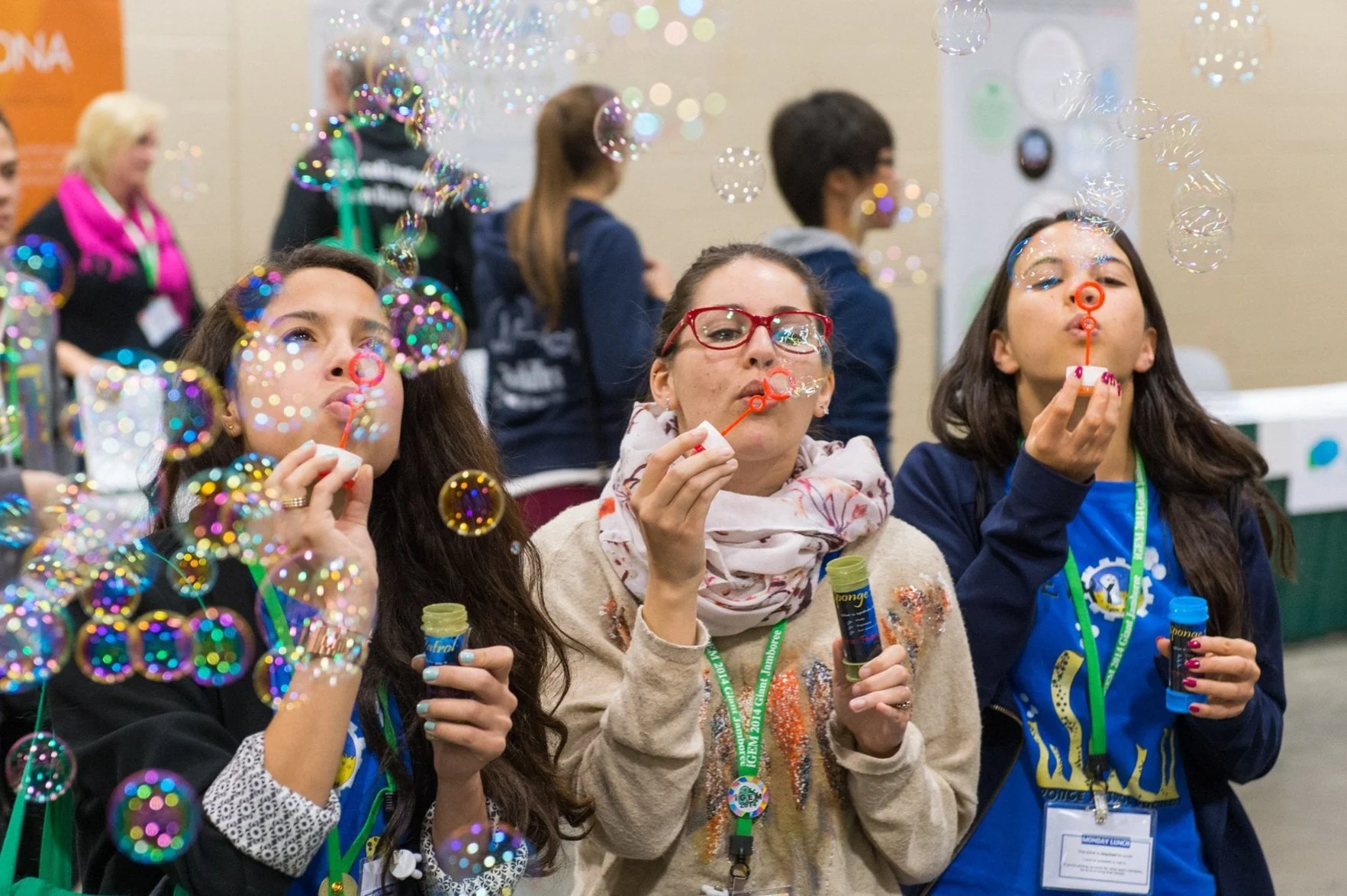Bursting demographic bubbles: How to build a diverse and inclusive team
by Divya Ail and Anne S. Meyer, on behalf of the Diversity & Inclusion Committee
More diverse and inclusive teams produce greater innovation and overall better science. Yet, STEM (science, technology, engineering, and math) fields still exist within demographic bubbles due to the systemic and persistent exclusion of people based on gender, or ethnicity, or socioeconomic status, or other reasons.
At iGEM, we are actively bursting those demographic bubbles to create a more diverse and inclusive scientific community and eliminate barriers to participation. Our purpose is to make sure that the field of synthetic biology, and all of the power that this technology holds, gets developed everywhere by everyone.
Here are some recommendations from iGEM’s Diversity & Inclusion Committee on how you can build a diverse and inclusive team:
1. Consider the composition of your team
Before starting your project, consider the composition of your team. How can it best reflect and benefit from the diversity of your local community? Build a team with balanced representation; this may include recruiting team members of varying gender, ethnicity, age, academic backgrounds, etc. Let your team’s diversity in backgrounds and experiences be an asset to you during the competition!
2. Reach out to underrepresented groups
Actively reach out to underrepresented members of your local community and encourage them to join your team. You may want to connect with university organizations with related missions, such as those supporting underrepresented minorities in STEM, to help spread the word. This is not only limited to student team members. For example, ask female and non-binary mentors to help serve as your team’s advisors, instructors, and PIs. You can even encourage them to apply to be competition judges and help improve representation within iGEM.
3. Commit to making reasonable adjustments
Make reasonable adjustments to make your team inclusive to people that may require accommodations, such as those with disabilities, long-term health conditions, and/or caring responsibilities. Emphasize your commitment to making reasonable adjustments both during the recruitment process and project itself. Regularly meet with individuals to discuss adjustments that would help them participate most effectively. For example, incorporate flexible working hours to accommodate team members with caring responsibilities, ongoing health appointments, or varying attention spans. Designate a quiet area in the lab for students who may be sensitive to loud noises. Identify lab instruments that could be tailored for students who may have motor coordination impairments. This website and the OLS Canmore Canada 2018 iGEM team’s wiki are two of the many useful resources out there on making reasonable adjustments in a lab setting.
4. Make sure everyone’s voice is heard
Allow all team members to contribute to their fullest potential. Make sure everyone’s voice is heard. Try to make sure that everyone can follow their interests and learn new skills, rather than limiting team members to their current skill-level. For example, pair members who are more experienced in certain areas with junior or less experienced members who they can train and mentor. Consider kicking off your first team meeting by making a list of everything each team member hopes to gain from their iGEM experience. Take this list into account when assigning responsibilities as your project plans develop.
5. Equitably distribute roles and responsibilities
Distribute team roles and responsibilities in an equitable manner. For example, avoid assigning all of the “scientific” or “technical” tasks to certain (often male) members and leaving “secretarial” or “communication” tasks to other (often female) members. A good way to share responsibilities more fairly is to have every team member take ownership over at least one scientific effort and one non-technical effort.
6. Recognize everyone’s contributions
Since iGEM strongly values attribution and acknowledgment, be sure to recognize everyone’s ideas, contributions, and accomplishments! Creating a positive environment in which everyone feels welcome, supported, and able to contribute to their fullest potential will make the iGEM experience truly enjoyable. Beyond the competition season, this positivity will carry through your professional career and lead you and your teammates to pursue new opportunities in synthetic biology and STEM.
7. Improve diversity and inclusion for the broader community
Think beyond the competition about ways to improve diversity and inclusion for the broader community. Many individuals will want to understand your project and to collaborate or connect with your team, and it is important to include them in your impactful work. For example, you can take inspiration from these iGEM teams to make your wiki accessible to persons with disabilities and underrepresented groups during and beyond the iGEM competition.
8. Make sure your research is representative
Consider how your research itself can be most representative. You may not realize it, but many project design aspects can unintentionally carry bias. Think about how your research ideas and methods might be excluding various groups of people. Proofread your surveys to make sure you are using appropriate and inclusive language. This website is one of numerous resources in which you can find best practices for developing an inclusive survey.
Building a diverse and inclusive team, and honoring the perspectives and contributions of everyone involved in your project, will go a long way – not only toward creating a more welcoming scientific community, but also toward greater innovation and better science as your team pushes the boundaries of synthetic biology. The iGEM Diversity & Inclusion Committee is here to help you, answer questions, and to work together with you in making iGEM, and the STEM community in general, more diverse and inclusive. We’d love to hear from you and encourage you to get in touch with us at diversity [AT] igem [DOT] org.
Need more help? Click here to read more blog posts about getting started in the iGEM Competition.
This post was originally published February 16, 2022. It has been updated and re-published March 22, 2023.










